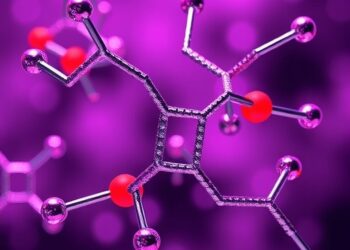The molecules that make up the matter around us are in constant motion. What if we could harness that energy and put it to use?
The molecules that make up the matter around us are in constant motion. What if we could harness that energy and put it to use?
Over 150 years ago Maxwell theorized that if molecules’ motion could be measured accurately, this information could be used to power an engine. Until recently this was a thought experiment, but technological breakthroughs have made it possible to build working information engines in the lab.
With funding from the Foundational Questions Institute, SFU Physics professors John Bechhoefer and David Sivak teamed up to build an information engine and test its limits. Their work has greatly advanced our understanding of how these engines function, and a paper led by postdoctoral fellow Johan du Buisson and published recently in Advances in Physics: X summarizes the findings made during their collaboration.
“We live in a world full of extra unused energy that potentially could be used,” says Bechhoefer. Understanding how information engines function can not only help us put that energy to work, it can also suggest ways that existing engines could be redesigned to use energy more efficiently, and help us learn how biological motors work in organisms and the human body.
The team’s information engine consists of a tiny bead in a water bath that is held in place with an optical trap. When fluctuations in the water cause the bead to move in the desired direction, the trap can be adjusted to prevent the bead from returning to the place where it was before. By taking accurate measurements of the bead’s location and using that information to adjust the trap, the engine is able to convert the heat energy of the water into work.
To understand how fast and efficient the engine could be, the team tested multiple variables such as the mass of the bead and sampling frequency, and developed algorithms to reduce the uncertainty of their measurements.
“Stripped down to its simplest essence, we can systematically understand how things like temperature and the size of the system changes the things we can take advantage of,” Sivak says. “What are the strategies that work best? How do they change with all those different properties?”
The team was able to achieve the fastest speed recorded to date for an information engine, approximately ten times faster than the speed of E. coli, and comparable to the speed of motile bacteria found in marine environments.
Next, the team wanted to learn if an information engine could harvest more energy than it costs to run. “In equilibrium, that’s always a losing game,” Bechhoefer says. “The costs of gathering the information and processing it will always exceed what you’re getting out of it, but when you have an environment that has extra energy, [molecules doing] extra jiggling around, then that can change the balance if it’s strong enough.”
They found that in a non-equilibrium environment, where the engine was in a heat bath with a higher temperature than the measuring apparatus, it could output significantly more power than it cost to run.
All energy on Earth comes from the sun, and it eventually radiates out into space. That directional flow of energy manifests itself in many different ways, such as wind or ocean currents that can be harvested. Understanding the principles behind information engines can help us make better use of that energy.
“We’re coming at [energy harvesting] from a very different point of view, and we hope that this different perspective can lead to some different insights about how to be more efficient,” Bechhoefer says.
The pair is looking forward to working together on other projects in the future. “We were lucky to get a joint grant together. That really helped with the collaboration,” says Bechhoefer.
Sivak, a theorist, and Bechhoefer, an experimentalist, bring complementary approaches to their work, and they have been able to attract trainees who want to work with both. “We have different styles in terms of how we go about mentoring and leading a group,” says Sivak. “Our students and post-docs can benefit from both approaches.”
Journal
Advances In Physics
Article Title
Performance limits of information engines
Article Publication Date
3-Mar-2024




